Occasionally we have brutally cold winters here in northern Utah. It’s my opinion that unusually cold temperatures when combined with thick crusted snow gives harriers little access to their staple food around here – voles. Survival then becomes tenuous for the harriers and they’re forced to move on to other food sources like small birds, dead carp and waterfowl. When a large meal like a carp or duck is available many harriers often fight over the food item and they do so with ferocity. During less stressful times of the year I often see these birds skirmish but then it almost seems like a playful interlude that they do simply for “fun”. Not so when it’s very cold and food is scarce – then it’s deadly serious and incredibly interesting to observe and photograph.
First, a disclaimer. Some of the photos I’ll present here would wither under the scrutiny of critique because of cut off or clipped wings, missing eyes or heads, lack of catch lights and difficult and rapidly changing lighting conditions. My intent here is to show the behavior with the best images I have but some of them do have obvious flaws.
The calm before the storm
I didn’t see harriers make this Mallard kill but it was still fresh when I came across this bird on the duck. At first I though I’d simply be photographing the harrier calmly enjoying its meal but I was very mistaken.
Thinking about challenging the larger bird for the meal
It didn’t take long for other birds to challenge her for the Mallard. Some were timid about it at first, like this smaller harrier that walked up slowly behind her and just watched for a while.
More competitors for the duck
But soon other birds became much more aggressive in competing for the Mallard. This harrier came in with a real chip on its shoulder.
The fight begins
And then all hell broke loose.
Three harriers in the mix
At times there were three or even four harriers fighting over the duck. I was fairly close to them and usually couldn’t get all the action into the frame with that many birds. I’ve included this shot even though there’s not a head or eye to be seen in the image because it depicts just how furious the action could be with multiple birds (and because I didn’t clip any body parts…).
Harriers are very, very fast – blindingly so. The talons would strike out at an adversary so quickly that often I wasn’t even aware it had happened until I processed the images on my computer.
Striking out at a challenger
In this shot the talons of the harrier on the right have actually embedded in the chest wall of the other bird. What’s left of the Mallard is under the tail of the adult.
More embedded talons
And here, talons have struck their mark again.
Another challenger coming in
Whenever a more dominant bird was able to drive off its competitors it wouldn’t take but a few seconds before another harrier would come in to challenge the bird on the duck. Fast and furious action!
A headless ballet
No heads or eyes visible here but I still liked the complementary poses and the dynamics of the image.
Talons striking out again
This is one of my favorite photos from the encounter.
Interesting body language
I wish I knew the behavioral significance of these postures. I observed it several times. The birds would be battling away furiously and then hold these postures calmly for several seconds. Then they’d go at it again. Fascinating.
You may have noticed the lack of adult males (the Grey Ghost) in these images. There were several of them around the perimeter of the action but they never once seriously challenged the females and juveniles over the Mallard. Since adult females are about 1/3 heavier than the males (sexual dimorphism) and research shows that the males lose virtually every aggressive interaction with females I suspect the males know not to tangle with them and figured that retreat was the better part of valor.
This was an encounter I will never forget. I spent several hours photographing the action and I was simply awed by what I witnessed. I just wish I had been a more experienced photographer when it occurred. If it ever happens in my presence again I hope to make fewer photographic mistakes.
My apologies to those with dial-up or slow internet connections as this is a large post but I felt that in order to tell the story well it would require a large number of images. I’d actually have liked to include even more of them…
Addendum on 1/24/11. Wouldn’t you know it? Two days after I made this blog post I saw something that contradicted what I said above.
Male harrier harrassing a larger female
This morning I watched this male seeming to harrass a female harrier for perhaps 10 minutes. The male was always the aggressor as you can see in this photo. The female didn’t seem to take it all too seriously though and I definitely had the impression (probably anthropomorphic of me) that they were just having fun on a beautiful, warm winter morning. Their acrobatic antics were amazing to watch and extremely difficult to photograph because of their very quick choreographed aerial turns.
Another incredibly interesting day on the marshes for this bird photographer!
Ron



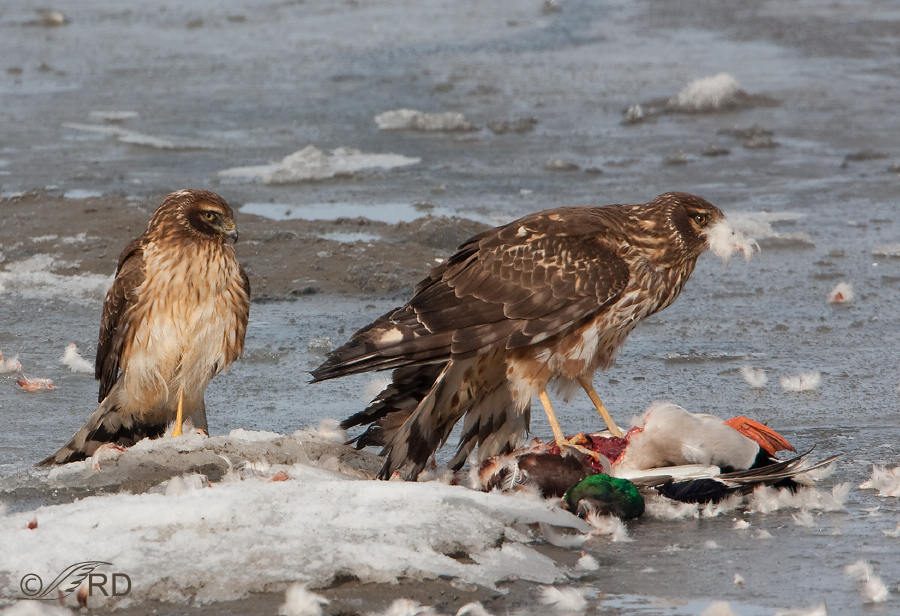
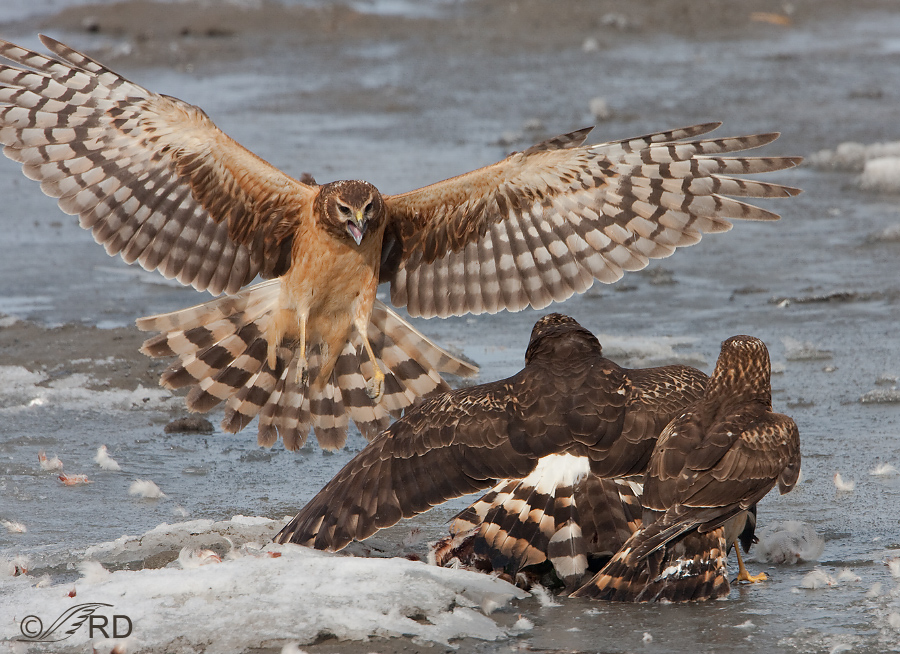
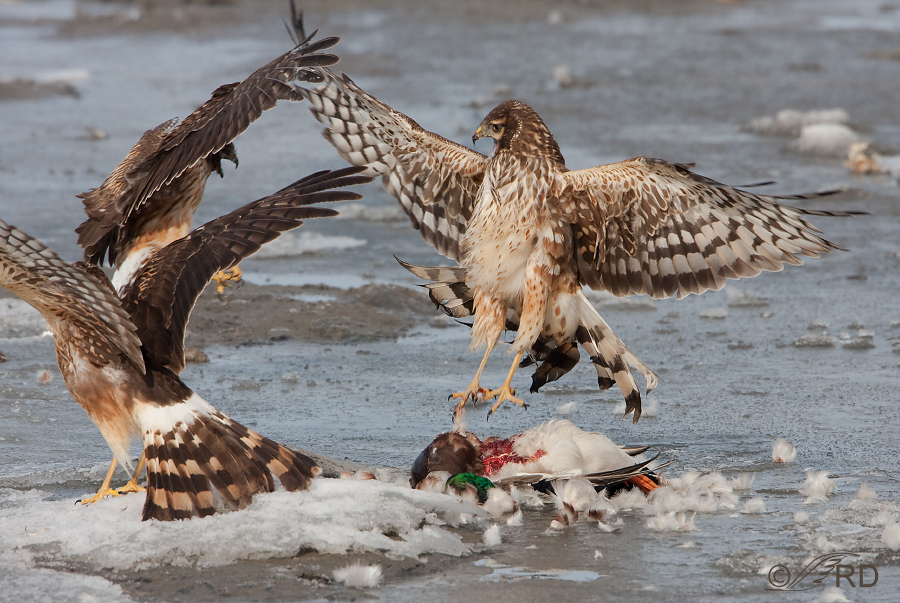
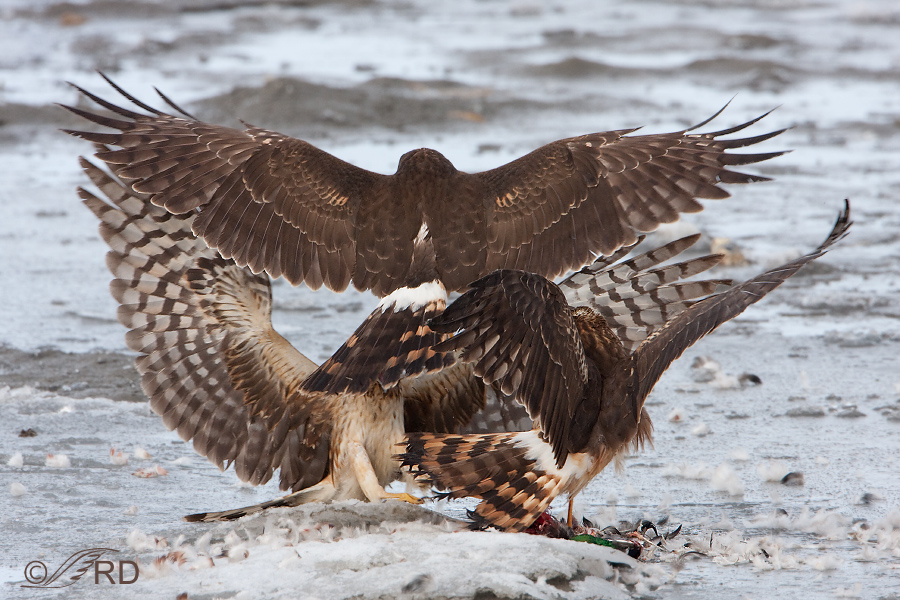
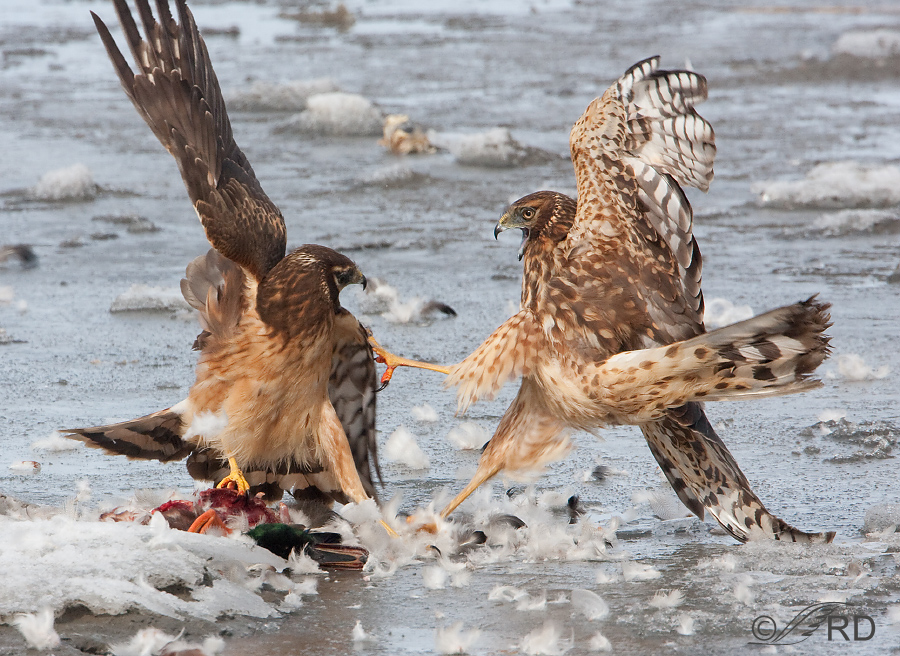
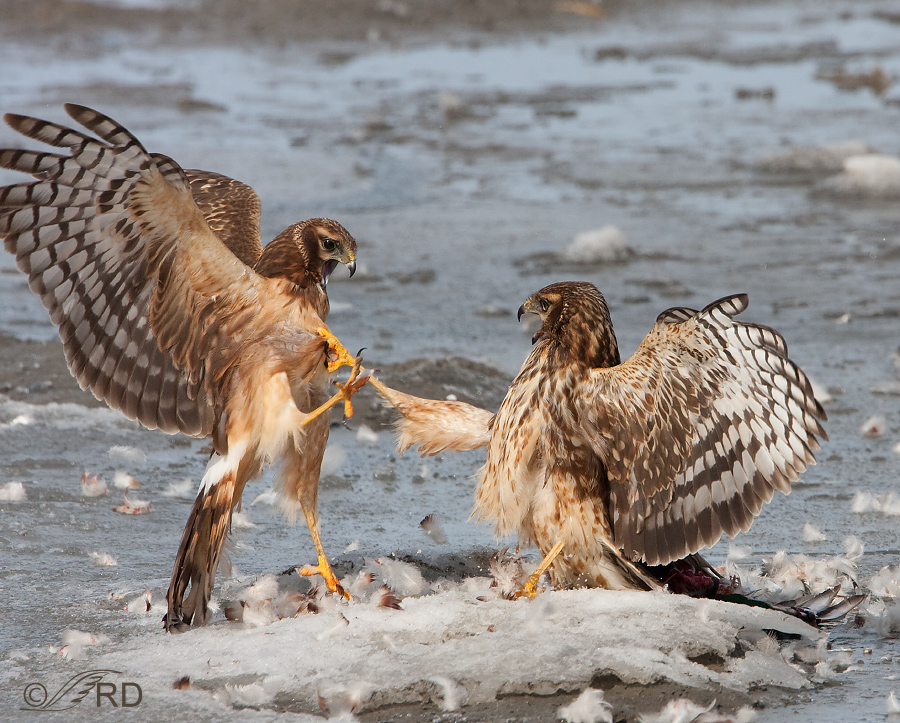
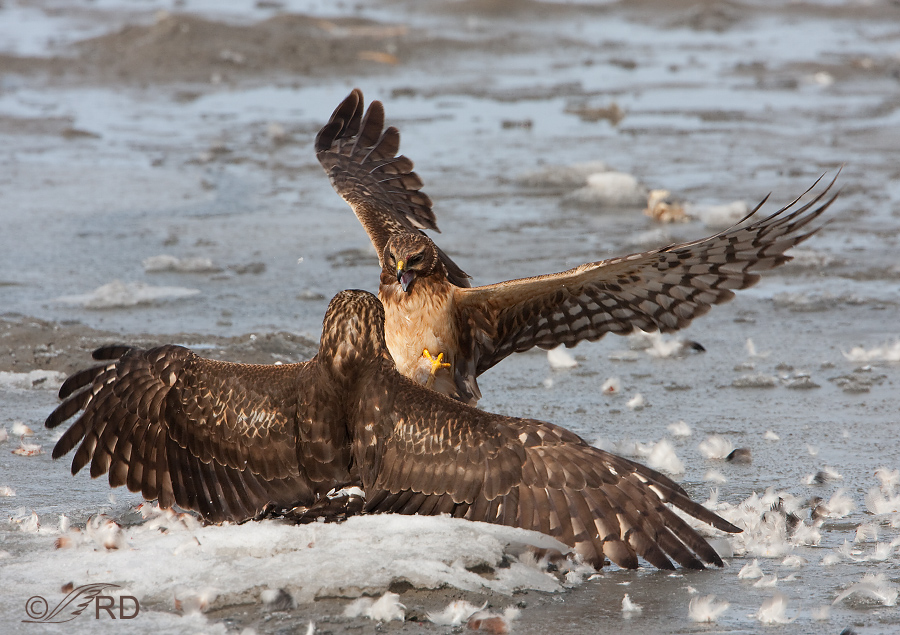
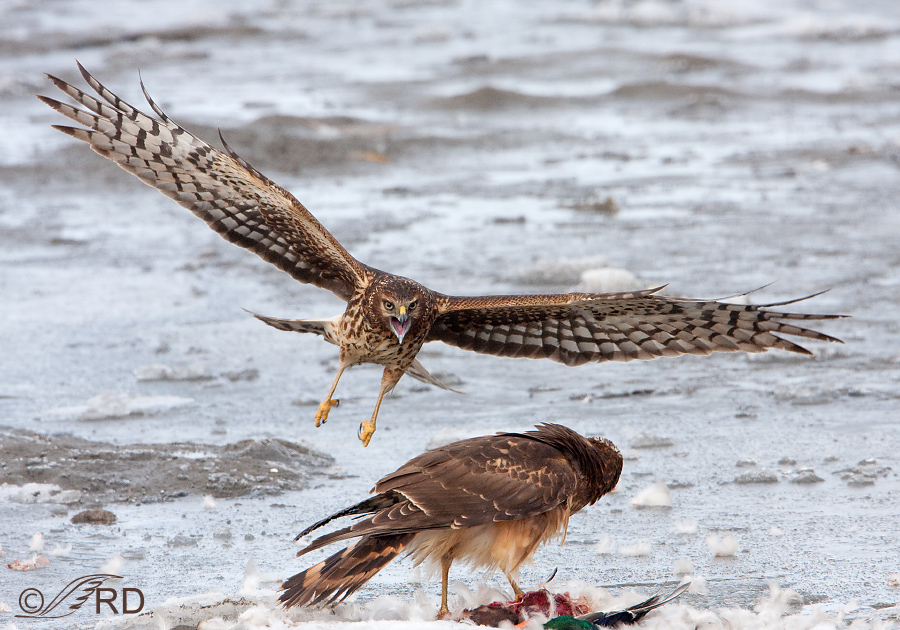
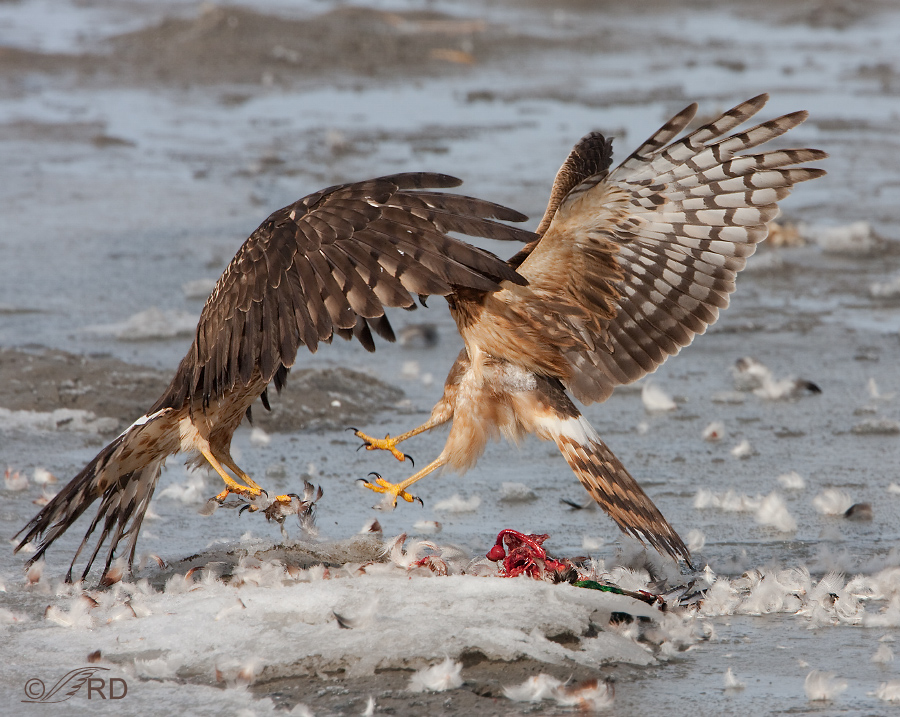
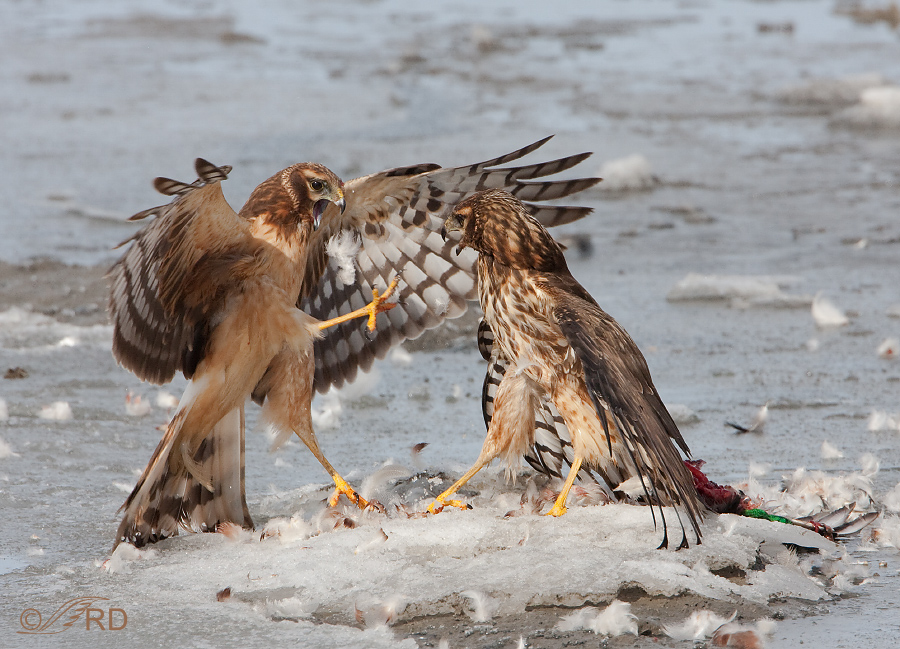
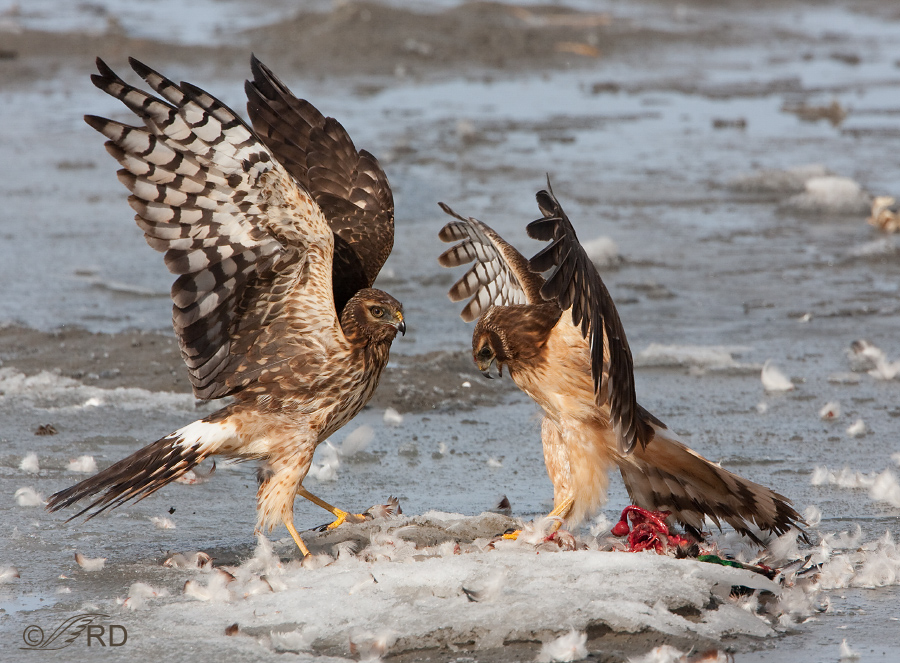
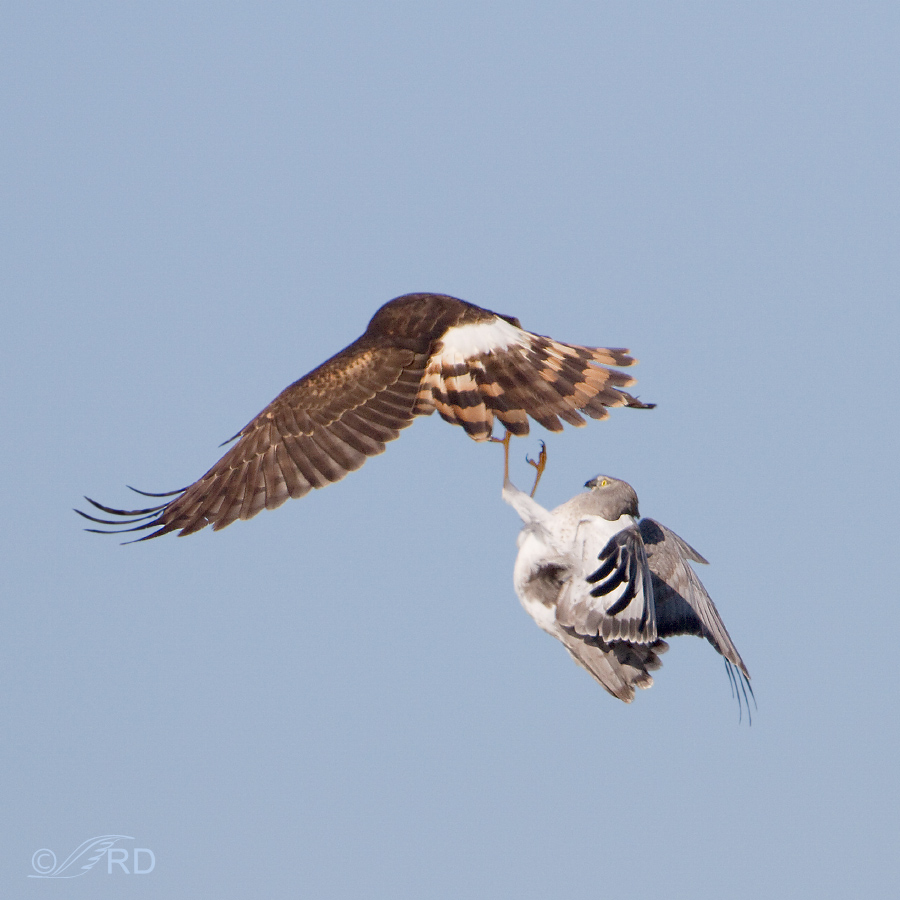
Great shots! Curious, did the initial female ultimately lose her meal or was it tough to tell in the melee?
I’m not sure, Marianne – too many birds and the action was too fast to follow individual birds through my viewfinder.
Valuable information about harriers, can be trained on using them to hunting birds ?
Thank you for these images! They are amazing. I am a new transplant to the north west and have just fallen in love with the raptors here, especially the eagles. I am obsessed with photographing them! We have had a new visitor to our beach that I only just identified as a Harrier. I had never heard or seen them before and I found this site while researching them. just amazing!
Some of the best behavior images that you have posted, amazing documentation and action.
Fascinating Ron, what a great observation and recording!